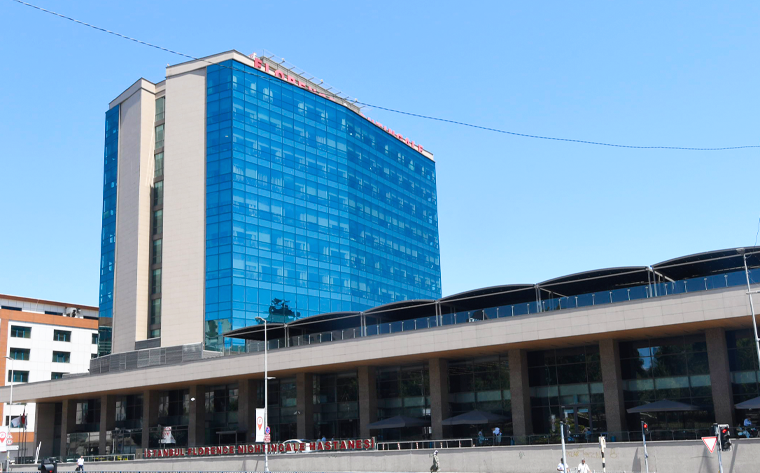
What is the Advanced Endoscopy and Interventional Gastroenterology Department and What Diseases Does It Cover?
Advanced Endoscopy and Interventional Gastroenterology is a specialized branch of medicine that includes advanced technological methods used in the diagnosis and treatment of digestive system diseases. This field goes beyond traditional endoscopic procedures and provides diagnosis and treatment of complex gastrointestinal diseases with minimally invasive methods.
About the Department of Advanced Endoscopy and Interventional Gastroenterology
The Advanced Endoscopy and Interventional Gastroenterology department is a specialty that plays a leading role in the diagnosis and treatment of digestive system diseases. This department addresses complex gastrointestinal (stomach, intestines, pancreas, liver and bile duct) problems using advanced technological devices and innovative procedures, as well as traditional endoscopic methods. Advanced endoscopy techniques are less invasive than traditional surgical methods and generally offer shorter recovery times.
Who is an Advanced Endoscopy and Interventional Gastroenterology Specialist and What Are Their Duties?
An Advanced Endoscopy and Interventional Gastroenterologist is a physician who has advanced training in gastroenterology and can perform complex endoscopic procedures. These specialists have received special training in endoscopic procedures and interventional techniques. Their duties include performing endoscopic examinations, taking biopsies, removing polyps, opening narrowed or blocked areas, and treating a variety of gastrointestinal problems.
What Diseases Are Covered by Advanced Endoscopy and Interventional Gastroenterology?
The Advanced Endoscopy and Interventional Gastroenterology department covers many diseases related to the digestive system:
- Pancreaticobiliary diseases (pancreatic cancer, bile duct stones)
- Gastrointestinal (stomach, colon) cancers and precancerous lesions
- Inflammatory bowel diseases (Crohn's disease, ulcerative colitis)
- Small intestine polyps and cancers
- Digestive system strictures,
- Gastroesophageal reflux disease,
- Unexplained bleeding or anemia,
- Early stage digestive system tumors and polyps,
- Motility disorders
- Chronic liver diseases and their complications
What are Advanced Endoscopy and Interventional Gastroenterology Examinations?
Advanced endoscopy and interventional gastroenterology examinations include various endoscopic procedures used to diagnose digestive system diseases.
These examinations include:- Endoscopic Ultrasound (EUS)
- Endoscopic Retrograde Cholangiopancreatography (ERCP)
- Capsule Endoscopy
- Double Balloon Enteroscopy
- Confal Laser Endomicroscopy
What Methods Are Used in Advanced Endoscopy and Interventional Gastroenterology Treatments?
The methods used in advanced endoscopy and interventional gastroenterology treatments vary depending on the type and severity of the disease.
Diagnostic and minimally invasive advanced endoscopic applications applied in the Advanced Endoscopic and Interventional Gastroenterology Department of Florence Nightingale Hospitals are as follows:
- Endoscopic Mucosal Resection (EMR): This method is used to remove small tumors or abnormal tissues located in the lining (mucosa) of the digestive tract. With the help of an endoscope, the tissue around the lesion is lifted and then cut out.
- Endoscopic Submucosal Dissection (ESD): Similar to EMR, but used for larger or deeper lesions. In this technique, the submucosal layer beneath the lesion is dissected with special instruments and the lesion is removed in one piece.
- Per-oral Endoscopic Myotomy (POEM): This method is usually used in cases of achalasia, which is the inability of the esophageal muscles to relax. The endoscope is inserted through the mouth and the lower esophageal sphincter is cut, thus facilitating swallowing.
- Endoscopic Full-Thickness Resection (EFTR): Used to remove lesions that involve all layers of the digestive system wall. This method is preferred for deeper-seated or full-thickness lesions.
- Radiofrequency ablation (RFA): This technique uses radio waves to destroy abnormal tissue. It's especially effective in treating precancerous conditions like Barrett's esophagus.
- Manometry (Esophageal and Anal): This method is a sensitive test that measures muscle movements in the esophagus and anus area. It plays a critical role in determining the source of the problem, especially in patients who have difficulty swallowing or defecation problems.
- Biofeedback Therapy in Anorectal Diseases: This treatment is an innovative approach that allows the patient to control his/her own body functions by observing them.
- Chromoendoscopy: This procedure, which is performed using special dyes during endoscopy, makes small lesions or abnormal tissues that may be missed during normal endoscopy more visible.
- Confocal Laser Endomicroscopy (CLE) (Cellvisio): This advanced technology provides imaging at the cellular level during endoscopy.
- Submucosal Tunnel Endoscopic Resection (STER): This method is used to remove submucosal tumors, especially in the esophagus and stomach.
- Botox Injection to the Stomach: This method used in the treatment of obesity slows down stomach movements and increases the feeling of fullness by injecting Botox into the stomach muscles. It is used as an auxiliary method in the weight loss process.
- Stomach Balloon Placement: This is another method used in the treatment of obesity. The balloon placed in the stomach with the help of endoscopy reduces the stomach capacity, allowing less food to be eaten.
- Endoscopic Stomach Reduction (ESG): It is a non-surgical stomach reduction method. With the help of an endoscope, the inner surface of the stomach is stitched and reduced, so the patient consumes less food and loses weight.
When to Visit Advanced Endoscopy and Interventional Gastroenterology Department?
An Advanced Endoscopy and Interventional Gastroenterology specialist should be consulted if the following situations are observed:
- Persistent or severe abdominal pain
- Chronic diarrhea or constipation
- Unexplained weight loss
- Difficulty swallowing
- Signs of bleeding in the gastrointestinal tract (bloody stools, black stools)
- Advanced or difficult gastrointestinal cancers
- Conditions requiring minimally invasive treatment for patients at surgical risk
What is Done During an Advanced Endoscopy and Interventional Gastroenterology Examination?
During an Advanced Endoscopy and Interventional Gastroenterology examination, the patient's digestive system is examined in detail. The procedure is usually performed under local anesthesia or sedation, and the patient's comfort is ensured.
The following steps are followed during the examination:- The patient's general condition and medical history are evaluated.
- An endoscopic device is placed in the relevant area and visual examination is performed.
- If necessary, a biopsy is taken or therapeutic interventions are performed.








